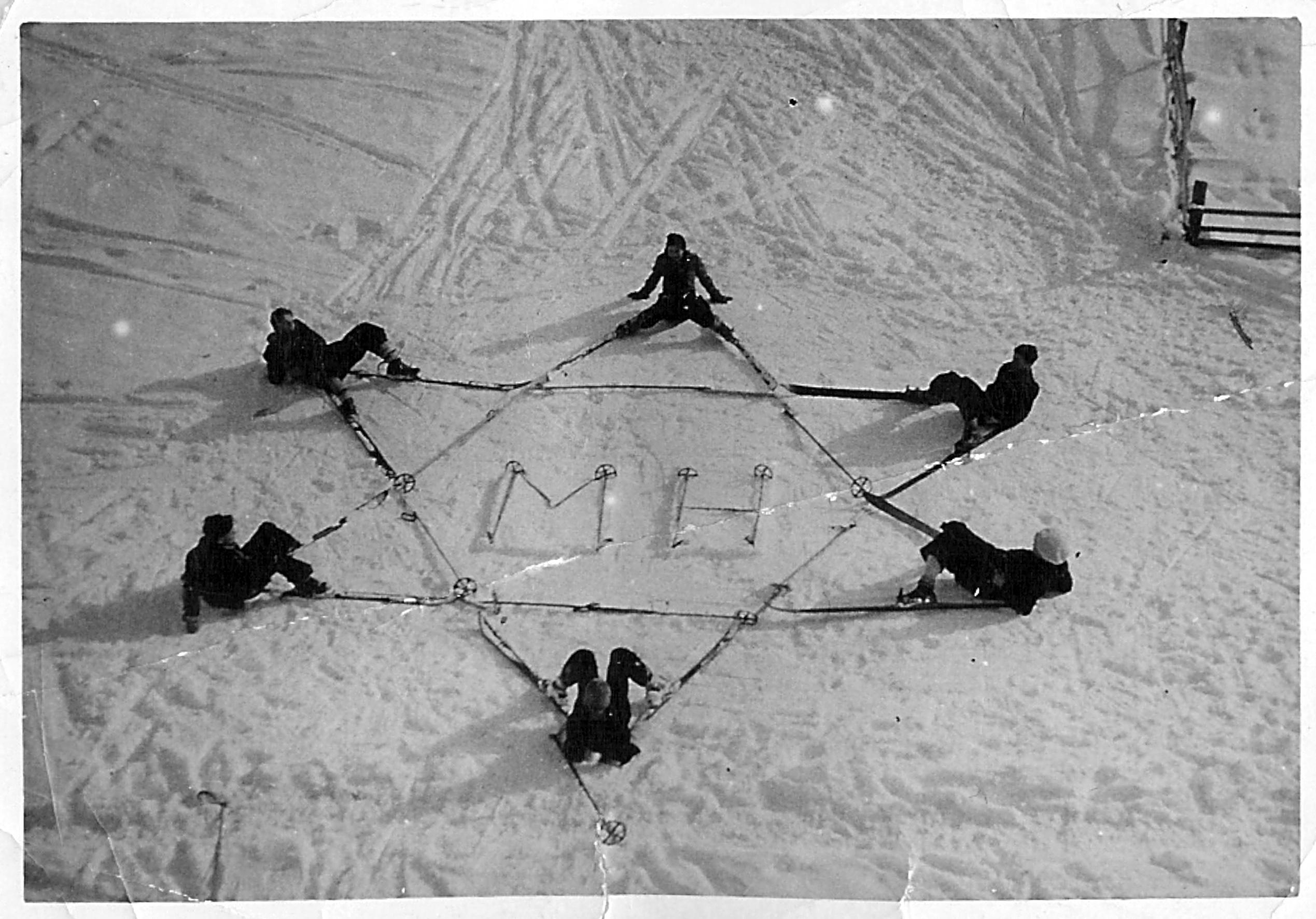
A Jewish love affair with the Alps

The significance of mountains for Jews goes back to when Moses climbed Mount Sinai. In more recent times, they’ve left their mark on the Alps.
A special exhibition “Did you see my Alps? A Jewish love story” is currently on show at the Forum of Swiss History in the town of Schwyz.
There are faint black and white outlines of the Alps on the walls of the spartan exhibit. Visitors shuffle from station to station, each one constructed of rough wooden planks, nailed together to symbolise mountains, climbers’ huts and the like.
There are old photos of pioneering Jewish climbers and skiers, scenes from mountain films including Leni Riefenstahl’s classic Das Blaue Licht (The Blue Light) which was produced and written by Jews, and traditional dress like Lederhosen, largely made popular by a Jewish industrialist.
The Jewish love affair with the Alps would eventually be tainted by anti-Semitism before being rocked by the Second World War and the Holocaust. But there’s a happy – rather Orthodox – ending.
“Did you see my Alps?” has been put together by two Jewish museums in Austria – in Hohenems and Vienna. It highlights contributions Austrian and German Jews made to the development of mountaineering, alpine tourism and culture and is the brainchild of Hanno Loewy, curator at Hohenems.
Liberal climbers
Loewy tells swissinfo.ch that he saw the potential for such an exhibition when he learned of the role Jews played in the founding and development of mountaineering clubs in Austria and Germany. Clubs they would eventually be expelled from.
While many sports associations were nationalistic and racist, Loewy explains, the alpine clubs had a liberal tradition.
“They were part of society where Jews were accepted. So the whole debate and conflict about the alpine clubs in the early 30s became a test case for society – whether it was possible to throw Jews out of existing structures where they were well integrated.”
The Swiss Alpine Club (SAC) did not follow its German and Austrian counterparts when they introduced an Aryan article into their statutes, with the aim of excluding Jews.
However, researchers who have contributed to the exhibition found that members belonging to various SAC branches took part in heated debates whether to accept Austrian and German Jews who had become personas non grata in their own clubs.
Good customers but…
The Swiss response to rising anti-Semitism was also clearly visible in the files kept by hotelkeepers in Swiss mountain resorts: “Good customers, but Jews” was written in the secret “guestbook” of St Moritz’s Palace Hotel in 1921. Swiss researcher Bettina Spoerri found similar comments in files displayed at a private tourist museum in the former Hotel Post in Vulpera, also in southeastern Switzerland. The owner of the museum destroyed the records in 2004 for fear their existence would damage the village’s reputation.
By the 1930s, the image of the Alps as a playground was quickly fading. The mountains were becoming a fortress. A coil of barbed wire lies as a prop here for the darkest chapter.
“Barriers were built to block the frontiers in order to prevent people from escaping from Nazi Germany. And still a lot of Jews made it into Switzerland despite the Swiss patrols who didn’t want them to enter and German patrols who didn’t want them to leave,” Loewy explains.
Concentration camps were set up in alpine valleys where the Nazis also built munitions depots and weapons production facilities to protect them from allied bombing.
Loewy says this transformation of the Alps is one of the main themes of the show. “We have to decide everyday whether we want the Alps to be a playground for everyone or something that belongs to [only a few].”
Flame of love
The Jewish flame of love for the Alps was eventually rekindled – a point illustrated by a collection of contemporary photographs of Orthodox Jews on holiday in Swiss mountain resorts.
Even though the last Kosher hotel in Switzerland’s southeast – the Edelweiss in St Moritz – closed recently, Orthodox Jews still flock to this part of the Alps each year. They rent apartments and flats where they can adhere to their strict religious practices and dietary laws.
In fact, it was the founder of neo-Orthodoxy, rabbi Samson Raphael Hirsch, who gave the exhibition its name.
“When I shall stand before God, the Eternal One will ask me: Did you see my Alps?”, the exhibition quotes Hirsch as saying in the 1880s before visiting Switzerland.
“The wording is oral tradition,” Loewy says. “The other wording is ‘did you see my Switzerland’ since Switzerland is a synonym for the Alps. What he wanted to tell us was that he regarded the Alps as a very significant part of the earth – of creation – and he definitely found it important for a Jew to experience that.”
“And he also says to us, if there is somebody who owns the Alps, then it’s [either] God or nobody. They are a heritage of humanity.”
“Did you see my Alps? A Jewish love story” runs at the Forum of Swiss History in the town of Schwyz until October 28.
A comprehensive English guide to the German exhibition displays is available free of charge at the entrance.
The Forum’s permanent exhibition focuses on the culture and daily life of the Swiss covering five centuries beginning in 1300.
The Forum is a branch of the Swiss National Museum.
Schwyz is also home to the Museum of the Swiss Charters containing the historical documents related to the founding of the Swiss confederation and its formative years, dating from 1291 to 1513.
According to the Swiss Federation of Jewish Communities, there were 17,000 Jews living in the country in 2000, which is 1,000 fewer than 100 years earlier.
There are also around 7,000 Swiss Jews living in Israel, and a further 5,000 in other countries.
The Federation says the total figure (29,000) would be much higher, but the percentage of Swiss Jews marrying non-Jews has risen above 50% in recent years. The Federation claims that many of these Jews give up their faith upon marriage.

In compliance with the JTI standards
More: SWI swissinfo.ch certified by the Journalism Trust Initiative






























You can find an overview of ongoing debates with our journalists here . Please join us!
If you want to start a conversation about a topic raised in this article or want to report factual errors, email us at english@swissinfo.ch.